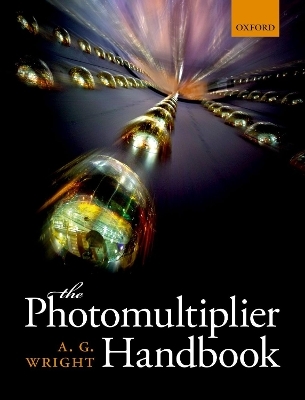
The Photomultiplier Handbook
Oxford University Press (Verlag)
978-0-19-956509-2 (ISBN)
Photomultipliers are extremely sensitive light detectors that can detect single photons. In multiplying the charge produced by incident light by up to 100 million times, these devices are essential to a wide range of functions, from medical instrumentation to astronomical observations. This complete and authoritative guide will provide students, practitioners, and researchers with a deeper understanding of the operating principles of these devices. Authored by an experienced user and manufacturer of photomultipliers, this handbook gives the reader insights into photomultiplier behaviour as a means to optimize performance.
Diffuse and low level light sources are best served with a photomultiplier for the detection of single photon emissions. Light detection and electron multiplication are statistical in nature and the mathematics of these processes is derived from first principles. The book covers other related topics such as scintillation counting, light guides, and large area detectors. The usually complicated subject of biasing a photomultiplier, very important for optimal performance, is reduced to a comprehensible set of calculations. All applications demand some form of electronics, the options for which are fully explored in this book.
A.G. Wright has worked with photomultipliers for forty years. He was born in Durban, South Africa, where he attended the University of Natal as a physics undergraduate and did postgraduate research on atmospherics generated by lightning discharges before the birth of 'health and safety.' He left South Africa in 1968 with his wife to experience life in London while studying for a Ph.D. at the University of London. Wright's doctoral thesis in cosmic rays, now known as astrophysics, concerned verifying cross-sections for electromagnetic interactions of muons underground, in particular pair production. The greatest challenge, however, concerned operating a scintillator stack unattended in a disused railway tunnel. He convinced the Electron Tube Division of EMI to employ him as an applications engineer drawing on his newly acquired knowledge of photomultipliers. This initiated his accumulation of expertise and experience with photomultipliers over the past several decades.
1: Why photomultipliers?
2: Photocathodes
3: The optical interface to photomultipliers
4: Statistical processes
5: Secondary emission and gain
6: Photomultiplier background
7: Measurement of low light flux
8: Timing with photomulipliers
9: Linear performance
10: Collection and counting efficiency
11: Signal induced background
12: Environmental considerations
13: Voltage dividers
14: Electronics for photomultipliers
| Erscheinungsdatum | 03.07.2017 |
|---|---|
| Zusatzinfo | 400 b&w line figures |
| Verlagsort | Oxford |
| Sprache | englisch |
| Maße | 203 x 253 mm |
| Gewicht | 1494 g |
| Themenwelt | Naturwissenschaften ► Physik / Astronomie ► Hochenergiephysik / Teilchenphysik |
| Naturwissenschaften ► Physik / Astronomie ► Optik | |
| Technik | |
| ISBN-10 | 0-19-956509-0 / 0199565090 |
| ISBN-13 | 978-0-19-956509-2 / 9780199565092 |
| Zustand | Neuware |
| Haben Sie eine Frage zum Produkt? |
aus dem Bereich


